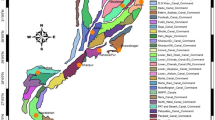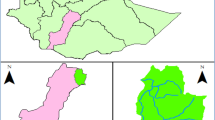Abstract
El Bayadh province, situated in southwestern Algeria, faces significant environmental challenges, including desertification, land degradation, and natural water scarcity, owing to its arid and semi-arid climate, which impedes the achievement of water-related Sustainable Development Goals. In such regions, decision-makers need methodologies that will allow them to develop a shared vision for the future of water resources, prepare for uncertainties, and adapt to ever-evolving challenges. This paper aims to assess water availability and demand under multiple scenarios that could plausibly unfold in the future, considering uncertain factors, such as climate change, policy options, technological development, and human behavior change, using the Water Evaluation and Planning System (WEAP) model. The study findings indicate a significant water supply–demand gap, resulting in substantial unmet water demand. Furthermore, the results demonstrate that water scarcity already impacts some agricultural areas. The results highlight the need to develop long-term strategies for the worst-case scenario and enhance preparedness for all response measures. Several adaptive solutions are proposed through this study, which can help water managers handle complex and interlinked water challenges.







Similar content being viewed by others
Availability of data and materials
Materials and data used in the present paper are available under request to the corresponding author.
References
Allan JA (2002) The middle east water question: hydropolitics and the global economy. I.B. Tauris & Co., Ltd., London, UK; New York, NY, USA. ISBN 9781860648137
Almulla Y, Ramirez C, Joyce B, Huber-Lee A, Fuso-Nerini F (2022) From participatory process to robust decision-making: an Agriculture-water-energy nexus analysis for the Souss-Massa basin in Morocco. Energy Sustain Dev 70:314–338. https://doi.org/10.1016/j.esd.2022.08.009
Andrade CWL, Montenegro SMGL, Montenegro AAA, Lima JR, Srinivasan R, Jones CA (2020) Climate change impact assessment on water resources under RCP scenarios: a case study in Mundaú River Basin, Northeastern Brazil. Int J Climatol. https://doi.org/10.1002/joc.6751
Avilés A, Palacios K, Pacheco J, Jiménez S, Zhiña D, Delgado O (2020) Sensitivity exploration of water balance in scenarios of future changes: a case study in an Andean regulated river basin. Theoret Appl Climatol. https://doi.org/10.1007/s00704-020-03219-y
Belaroui K, Djediai H, Megdad H (2013) The influence of soil, hydrology, vegetation and climate on desertification in El-Bayadh region (Algeria). Desalin Water Treat 52(10–12):2144–2150. https://doi.org/10.1080/19443994.2013.782571
Benaradj A, Boucherit H, Gougali M, Mihi A (2019) Impact du changement climatique sur les ressources en eau dans la région sud oranaise d’El Bayadh [Effects of Climate Change on El Bayadh water resources]. Séminaire International sur l′Hydrogéologie et l′Environnement SIHE 2019 Ouargla. (in French)
Boluwade A (2021) Impacts of climatic change and database information design on the water-energy-food nexus in water-scarce regions. Water-Energy Nexus 4:54–68. https://doi.org/10.1016/j.wen.2021.03.002
Brahim MM, Khader M, Nouri T, Khadidja H, Khadidja Z (2020) Management of conflicts linked to pastoral resource organizations in the El-Bayadh region (Case of Brézina) Algeria. Asian Res J Agric 5:23–33. https://doi.org/10.9734/arja/2020/v12i430089
Djellouli F (2016) Les Ressources En Eau Dans La Wilaya d’El-Bayadh : réalité, innovation et développement [Water resources of El Bayadh province : reality, innovation and development]. Rev Alinsan Wa Elmadjal 3:155–174 (in French)
Dlamini N, Senzanje A, Mabhaudhi T (2023) Assessing climate change impacts on surface water availability using the WEAP model: a case study of the Buffalo river catchment, South Africa. J Hydrol 46:101330. https://doi.org/10.1016/j.ejrh.2023.101330
FAO (2009) Groundwater management in Algeria draft synthesis report. Food and Agriculture Organization of the United Nations, Rome, p 2009
Faramarzi M, Abbaspour KC, Ashraf Vaghefi S, Farzaneh MR, Zehnder AJB, Srinivasan R, Yang H (2013) Modeling impacts of climate change on freshwater availability in Africa. J Hydrol 480:85–101. https://doi.org/10.1016/j.jhydrol.2012.12.016
Gao J, Christensen P, Li W (2017) Application of the WEAP model in strategic environmental assessment: Experiences from a case study in an arid/semi-arid area in China. J Environ Manag 198:363–371. https://doi.org/10.1016/j.jenvman.2017.04.068
Gharib AA, Blumberg J, Manning DT, Goemans C, Arabi M (2023) Assessment of vulnerability to water shortage in semi-arid river basins: the value of demand reduction and storage capacity. Sci Total Environ 871:161964. https://doi.org/10.1016/j.scitotenv.2023.161964
Groves DG, Yates D, Tebaldi C (2008) Developing and applying uncertain global climate change projections for regional water management planning. Water Resour Res. https://doi.org/10.1029/2008wr006964
Haasnoot M, Middelkoop H, van Beek E, van Deursen WPA (2009) A method to develop sustainable water management strategies for an uncertain future. Sustain Dev 19(6):369–381. https://doi.org/10.1002/sd.438
Hadeid M, Belmahi MN, Zanoune R (2018) Impact du foncier agricole sur une région pastorale: Le cas de la steppe occidentale algérienne. Études Rurales. https://doi.org/10.4000/etudesrurales.12545
Hadour A, Mahé G, Meddi M (2020) Watershed based hydrological evolution under climate change effect: an example from North Western Algeria. J Hydrol 28:100671. https://doi.org/10.1016/j.ejrh.2020.100671
Hamlat A, Errih M, Guidoum A (2013) Simulation of water resources management scenarios in western Algeria watersheds using WEAP model. Arab J Geosci 6(7):2225–2236. https://doi.org/10.1007/s12517-012-0539-0
Hamlat A, Kadri CB, Guidoum A, Bekkaye H (2021) Flood hazard areas assessment at a regional scale in M’zi wadi basin, Algeria. J Afr Earth Sci 182:104281. https://doi.org/10.1016/j.jafrearsci.2021.104281
Hamlat A, Meharzi S, Guidoum A, Sekkoum M, Mokhtari Y, Kadri CB (2023) GIS-based multi-criteria analysis for flood hazard areas mapping of M’zab wadi basin (Ghardaia, North-Central Algeria). Arid Land Res Manag. https://doi.org/10.1080/15324982.2023.2235315
Hamza AA, Getahun BA (2022) Assessment of water resource and forecasting water demand using WEAP model in Beles river, Abbay river basin, Ethiopia. Sustain Water Resour Manag 5:5. https://doi.org/10.1007/s40899-022-00615-2
Heinzel C, Fink M, Höllermann B (2022) The potential of unused small-scale water reservoirs for climate change adaptation: a model- and scenario based analysis of a local water reservoir system in Thuringia Germany. Front Water. https://doi.org/10.3389/frwa.2022.892834
Herrera-Pantoja M, Hiscock KM (2015) Projected impacts of climate change on water availability indicators in a semi-arid region of central Mexico. Environ Sci Policy 54:81–89. https://doi.org/10.1016/j.envsci.2015.06.020
Kadri CB, Nasralla CB (2023) GIS-based AHP technique for assessment of desertification in western highlands of Algeria. J Geovis Spat Anal 7:18. https://doi.org/10.1007/s41651-023-00147-z
Karahan SM, Elçi S (2023) Assessment of future water demand in a semiarid region of Turkey: a case study of Tahtali-Seferihisar Basin. Sustain Water Resour Manag. https://doi.org/10.1007/s40899-023-00817-2
Karen D (2017) Understanding supply-side and demand-side to support water management in the Asia Pacific. KINI-An Initiative for Sharing Water Knowledge, 9 February 2017. https://waterpartnership.org.au/understanding-supply-side-and-demand-side-to-support-water-management-in-the-asia-pacific/. Accessed 24 Sep 2023
Ministère des Ressources en Eau (MRE) (2010) Réalisation de l’étude d’actualisation du plan national de l’eau [Study on updating the national water plan]. Programme MEDA de l’Union Européenne. Groupement SOFRECO – Grontmij/Carl Bro – Progress – OIEau February 2010 (in French)
Ministère des Ressources en Eau (MRE) (2015) Plan National de l’Eau [The national water plan Synthesis]. Ministère des Ressources en Eau. (in French)
Moncada AM, Escobar M, Betancourth A, Vélez Upegui JJ, Zambrano J, Alzate LM (2020) Modelling water stress vulnerability in 00l Andean basins: case study of Campoalegre River basin, Colombia. Int J Water Resour Dev. https://doi.org/10.1080/07900627.2019.1699780
MRE (2009) Réalisation de la carte des ressources en eau souterraine du Nord de l’Algérie. Présentation des unités hydrogéologiques [Elaboration of groundwater resources maps in North of Algeria: Presentation of hydrogeological units]. Région Ouest. Ministère des Ressources en Eau. (in French)
Nasef MAA (2020) Complexity and uncertainty in development of water demand and supply scenarios: a case study of Egypt. Doctoral dissertation, University of Leeds. 2020.
Nilawar AP, Waikar ML (2019) Impacts of climate change on streamflow and sediment concentration under RCP 4.5 and 8.5: A case study in Purna river basin India. Sci Tot Environ 650:2685–2696. https://doi.org/10.1016/j.scitotenv.2018.09.334
Schilling J, Freier KP, Hertig E, Scheffran J (2012) Climate change, vulnerability and adaptation in North Africa with focus on Morocco. Agr Ecosyst Environ 156:12–26. https://doi.org/10.1016/j.agee.2012.04.021
Schilling J, Hertig E, Tramblay Y et al (2020) Climate change vulnerability, water resources and social implications in North Africa. Reg Environ Change 20:15. https://doi.org/10.1007/s10113-020-01597-7
Schneider P, Sander BO, Wassmann R, Asch F (2019) Potential and versatility of WEAP model (Water Evaluation and Planning System) for hydrological assessments of AWD (Alternate Wetting and Drying) in irrigated rice. Agric Water Manag 224:105559
Sogreah (2009) Etude d’inventaire et de développement de la PMH. Partie 1: Inventaire de la PMH Rapport définitif RA3 Wilaya de El Bayadh [Study of inventory and development of PMH]. Direction de L’Hydraulique Agricole. Ministry of Water Resources. Sogreah. Octobre 2009 (in French)
Stotler RL (2015) Chasing water: a guide for moving from scarcity to sustainability. Groundwater 53(3):354–355. https://doi.org/10.1111/gwat.12334
UNESCWA (2005) Module 8. Balancing water supply and demand. Workshop on “Training of Trainers on the Application of lWRM Guidelines in the Arab Region” Kuwait, 14–18 May 2005. E/ESCWA/SDPD/2005/WG.1/9
Wardropper C, Brookfield A (2022) Decision-support systems for water management. J Hydrol 610(2022):127928. https://doi.org/10.1016/j.jhydrol.2022.127928
Acknowledgements
The authors thank the National Agency for Sanitation and Water Resources Department of El Bayadh for their help. The authors would also like to thank the Stockholm Environment Institute for the WEAP software license granted to the first author. The authors would like to express sincere thanks to the editor and anonymous reviewers for their valuable insights and suggestions for improving the manuscript.
Funding
No funding was received for conducting this study.
Author information
Authors and Affiliations
Contributions
A.H., and B.H., designed the model and the computational framework. A.H., B.H., M.S., A.G., C.K., and A.G., collected and analysed the data. A.H., and B.H., performed the calculations. A.H., B.H., and C.K., contributed to the interpretation of the results.
Corresponding author
Ethics declarations
Conflict of interest
The authors declare no conflict of interest.
Additional information
Publisher's Note
Springer Nature remains neutral with regard to jurisdictional claims in published maps and institutional affiliations.
Rights and permissions
Springer Nature or its licensor (e.g. a society or other partner) holds exclusive rights to this article under a publishing agreement with the author(s) or other rightsholder(s); author self-archiving of the accepted manuscript version of this article is solely governed by the terms of such publishing agreement and applicable law.
About this article
Cite this article
Hamlat, A., Habibi, B., Guidoum, A. et al. Water supply and demand balancing and forecasting in a semi-arid region of Algeria using the WEAP model: a case study of El Bayadh province. Sustain. Water Resour. Manag. 10, 34 (2024). https://doi.org/10.1007/s40899-023-01006-x
Received:
Accepted:
Published:
DOI: https://doi.org/10.1007/s40899-023-01006-x




